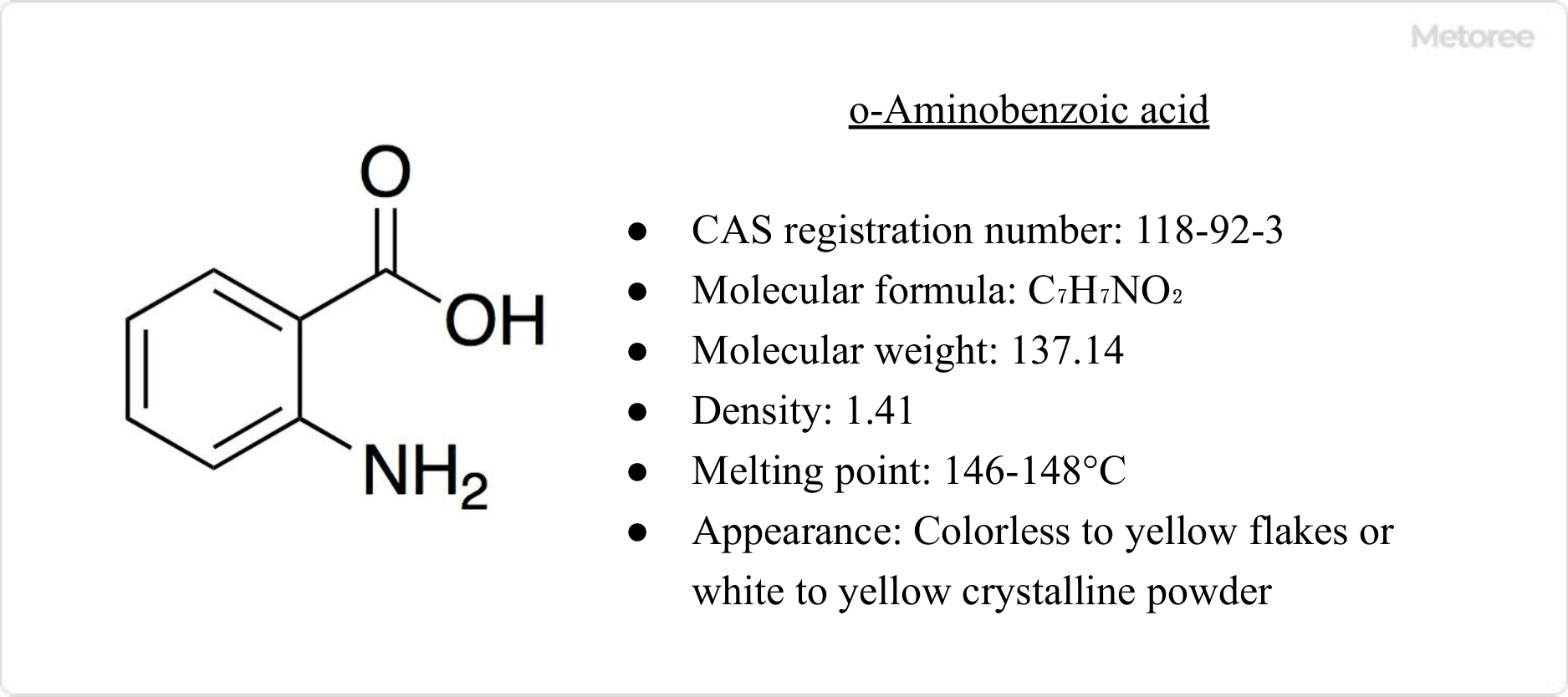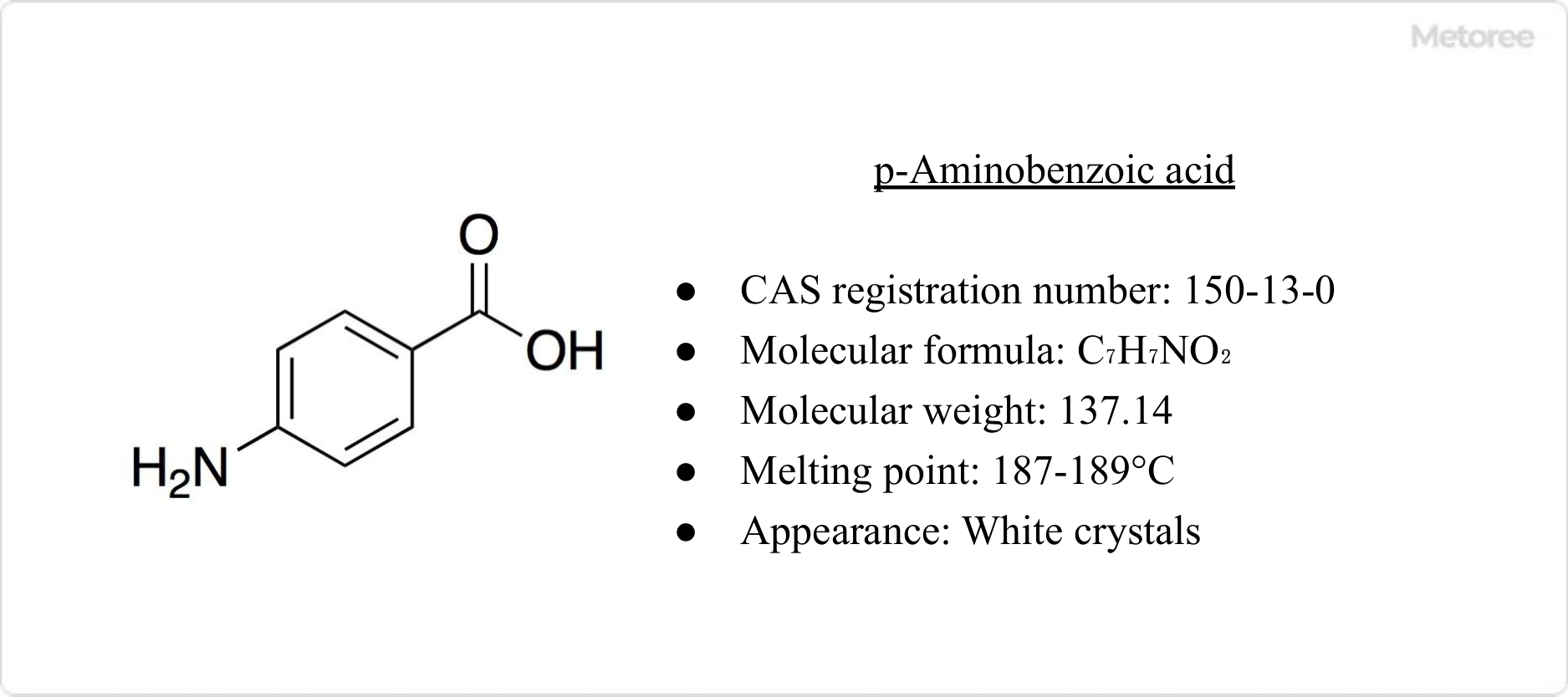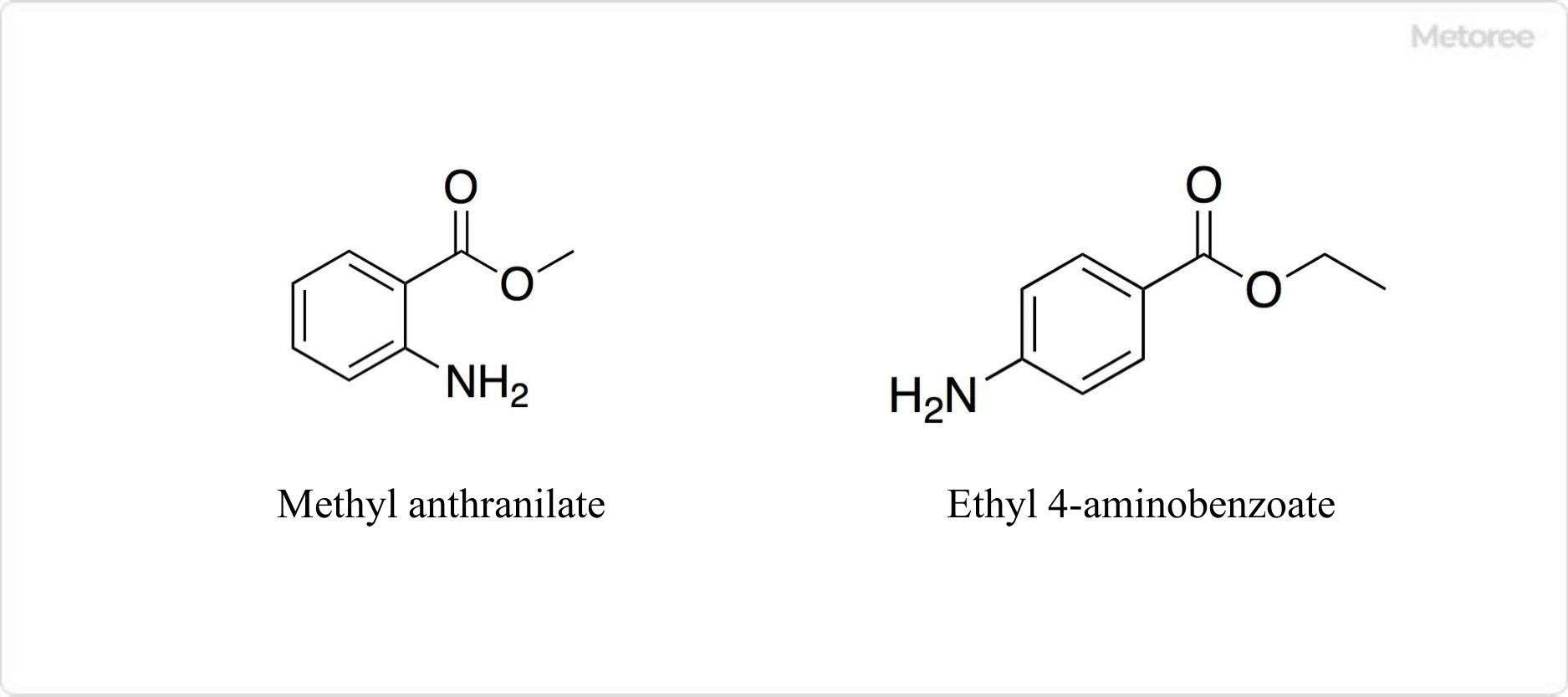What Is Aminobenzoic Acid?
Aminobenzoic Acid is a type of aromatic aminocarboxylic acid.
Aminobenzoic Acid has three isomers: o (ortho), m (meta), and p (para). o-Aminobenzoic Acid has lactogenic effects in mammals and is also known as vitamin L1. p-Aminobenzoic Acid is a precursor of folate in vivo. Aminobenzoic Acid is synthesized in vivo as a precursor to folate.
Uses of Aminobenzoic Acid
Among aminobenzoic acids, o-aminobenzoic Acid is used as a reagent for the analysis of metal ions such as cadmium, mercury, and zinc. It can also be used in the synthesis of dyes.
In contrast, p-aminobenzoic Acid is mainly used in the field of cosmetics and is used in supplements as an ingredient to assist in skin whitening because it inhibits ultraviolet rays from penetrating deep into the body and skin. As a pharmaceutical product, it can also be used as a treatment for irritable bowel syndrome.
In addition, derivatives of the esters and amides of Aminobenzoic Acid are used as local anesthetics.
Properties of Aminobenzoic Acid
o-Aminobenzoic Acid is a colorless to yellow flake or white to yellow crystalline powder. It has a density of 1.41 and a melting point of 146-148°C. o-Aminobenzoic Acid forms chelate complexes with a variety of metal ions, including mercury and cadmium. Under weakly acidic conditions the complexes form precipitates.
p-Aminobenzoic Acid is a white crystal with a melting point of 187-189°C.
Structure of Aminobenzoic Acid
The chemical formula of Aminobenzoic Acid is C7H7NO2. One amino group (-NH2) and one carboxy group (-COOH) are attached to the benzene ring. Molar mass is 137.14.
Another name for o-Aminobenzoic Acid is Anthranilic Acid. On the other hand, p-Aminobenzoic Acid is also called 4-Aminobenzoic Acid.
Other Information on Aminobenzoic Acid
1. o-Aminobenzoic Acid Synthesis

Figure 1. o-Aminobenzoic acid basic information
In vivo, o-aminobenzoic acid is synthesized from glutamine and chorismic acid by anthranilate synthase in the shikimic acid pathway, which is involved in the synthesis of tryptophan. Aminobenzoic Acid is a precursor to a wide variety of alkaloids.
Aminobenzoic Acid is also biosynthesized by kynurenine in the kynurenine pathway, a tryptophan metabolic pathway.
2. Synthesis of p-Aminobenzoic Acid

Figure 2. p-Aminobenzoic acid basic information
As a precursor to folic acid, p-aminobenzoic Acid is synthesized in vivo. p-Aminobenzoic Acid is an essential nutrient for fungi, but not for humans. The fungal enzyme converts p-aminobenzoic Acid to folic acid, but humans do not have dihydropteroate synthase.
Sulfa drugs, which are structurally similar to p-aminobenzoic Acid, inhibit the enzyme and exhibit antibacterial activity selectively against fungi.
3. Related Compounds of Aminobenzoic Acid

Figure 3. Related compounds of aminobenzoic acid
Methyl anthranilate, the ester of o-Aminobenzoic Acid and methanol, is a fragrance component found in jasmine and grapes. Therefore, its main use is as a flavoring agent. Methyl anthranilate is also potent as a bird repellent and is used to protect rice, fruits, corn, sunflowers, and golf courses.
Ethyl 4-aminobenzoic Acid, the ethyl ester of p-aminobenzoic acid, is available as a local anesthetic; ethyl 4-aminobenzoic acid can numb sensory nerves and block the transmission of pain. It is formulated as an oral medication in anti-motion sickness and gastrointestinal medications to reduce nausea and stomach pain. It is also used in ointments for topical application to relieve itching and pain from insect bites, external wounds, and hemorrhoids.